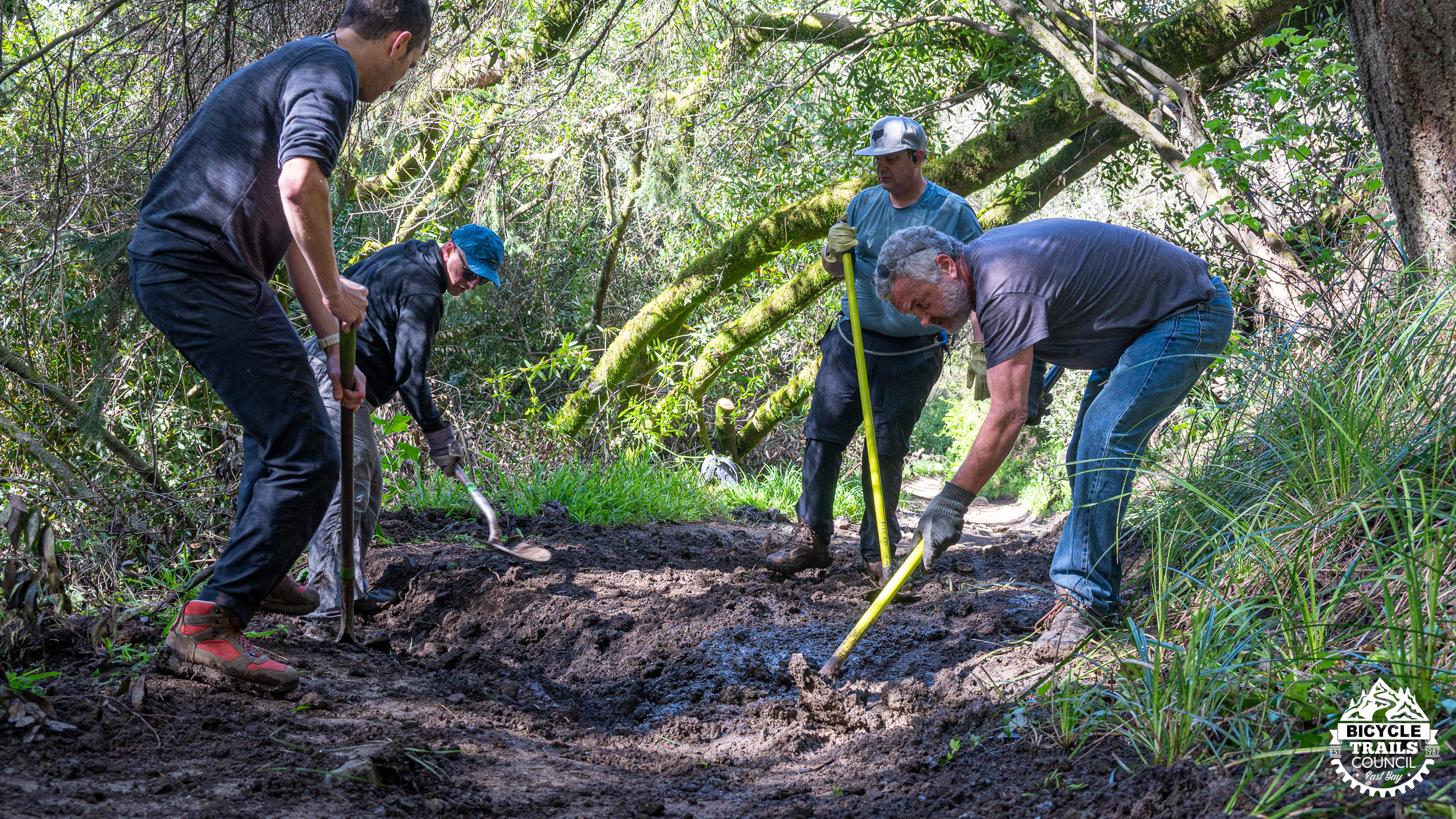By Advocacy Director Scott Bartlebaugh

Austin McInerny and Scott Bartlebaugh from BTCEB and Helen Gilbert Snyder from the El Cerrito High Mountain Biking team are representing mounting biking at the EBRPD Trail User Working Group. This working group is a collection of over 30 trail stakeholders including mountain bikers, hikers, equestrians, dog walkers, conservation interests, other land managers, Bay Area Ridge Trail, and a few others.
The group stems from the public review process and user conflict discussions in the Sibley McCosker Land Use Plan review process several years ago and the 2019 Board Trails Workshop. lt’s aimed at finding narrow trail stakeholder consensus on recommended solutions to reduce conflict and improve user experiences on new trails. User conflict has been cited as a significant factor hindering the expansion of the trial systems.
It’s one factor but not the only one. The acreage of the park district increased from ~65,000 acres in 1995 to ~125,000 acres today. During that same time just 12.5 miles of narrow trail were constructed and most of that was at Crockett Hills. 37% of that acreage currently is still in landbank status, not open to the public, and won’t open under until it goes through land use planning.
The discussion has been structured with various stakeholders presenting their perspective followed by discussion of how other users relate to that perspective and then possible solutions to conflicts. Hikers presented in November and mountain biking presented in February. Mountain biking was presented as a range of desired trail experiences including cross country, flow, features, and technically challenging trails. Of the trails open to mountain bikes there are very few with features or technical challenge.
A history of little change over decades, a lack of technical challenge, staff land use plans including bike access not being supported by the board, and mountain bike community participation in the public process yielding little contribute to increased trail poaching, social trail building and user conflict. This is further amplified with the explosive trail use growth by hikers and bikers during Covid.
The next meeting will focus on equestrians, followed by conservation interests, and then a couple of meetings focused on consensus solution recommendations. Options to apply to existing trails but that will be a separate advocacy effort if scope holds to new trails. Hopefully this will be a step to meaningful change in East Bay Regional Park District Parks.



